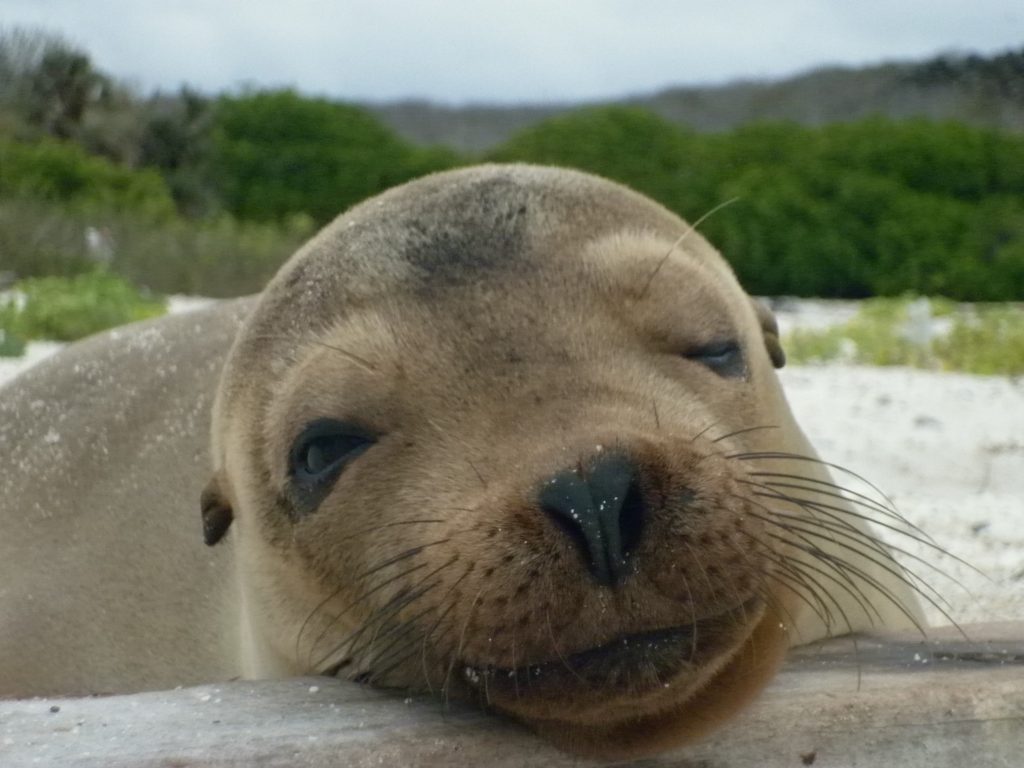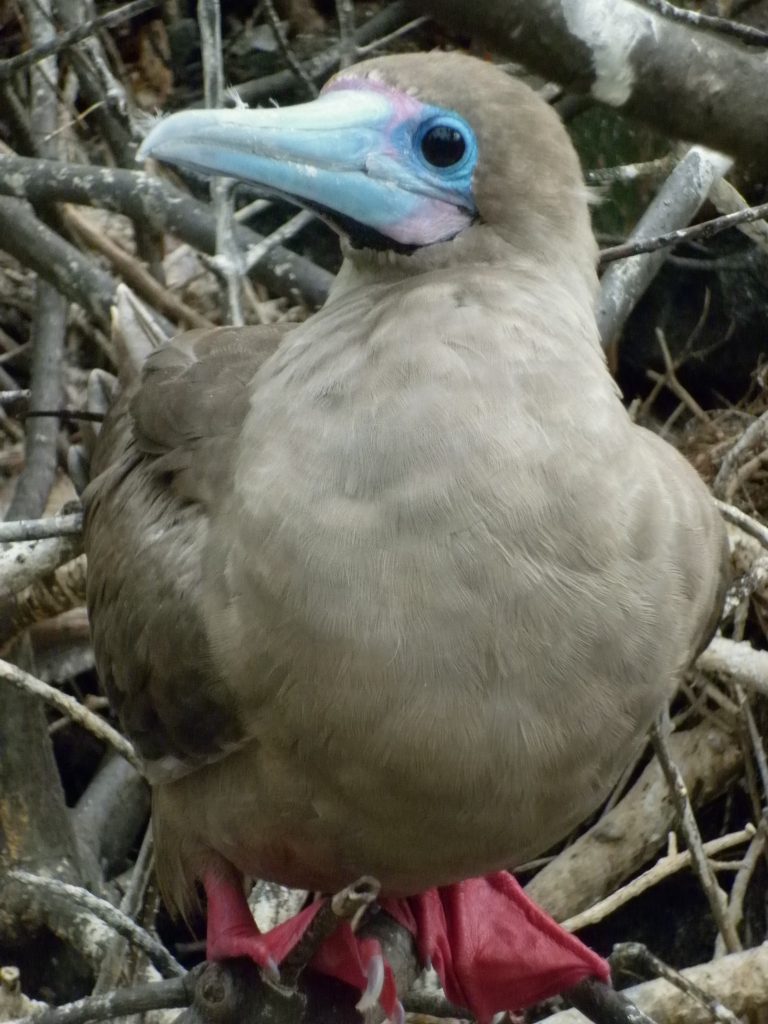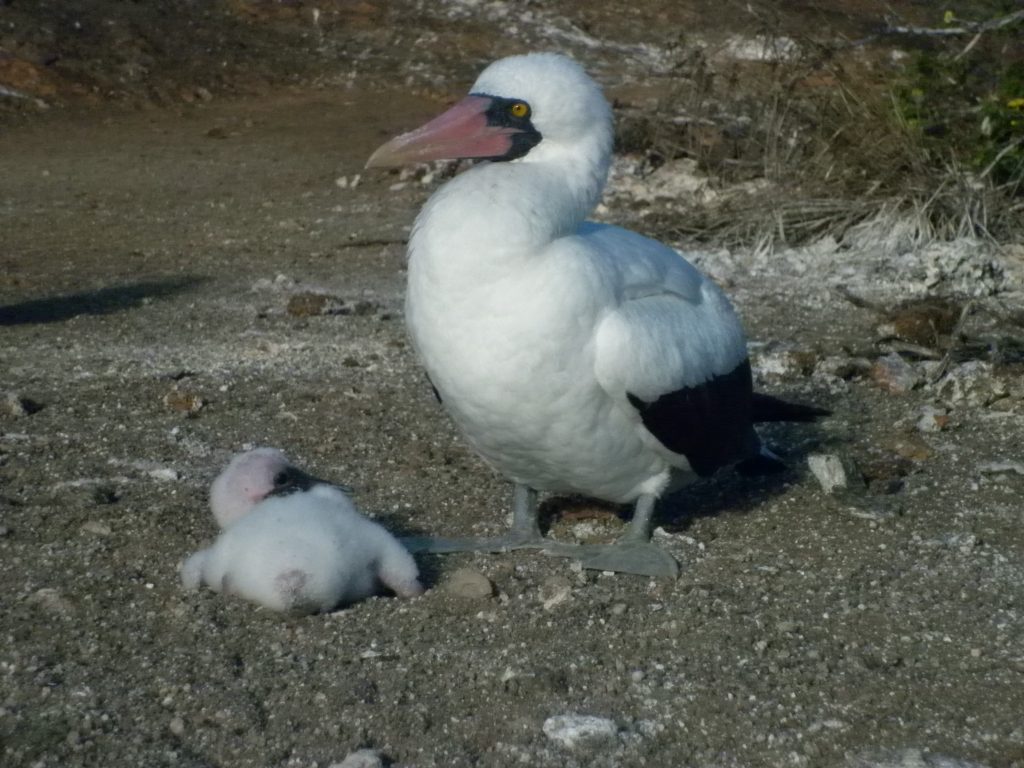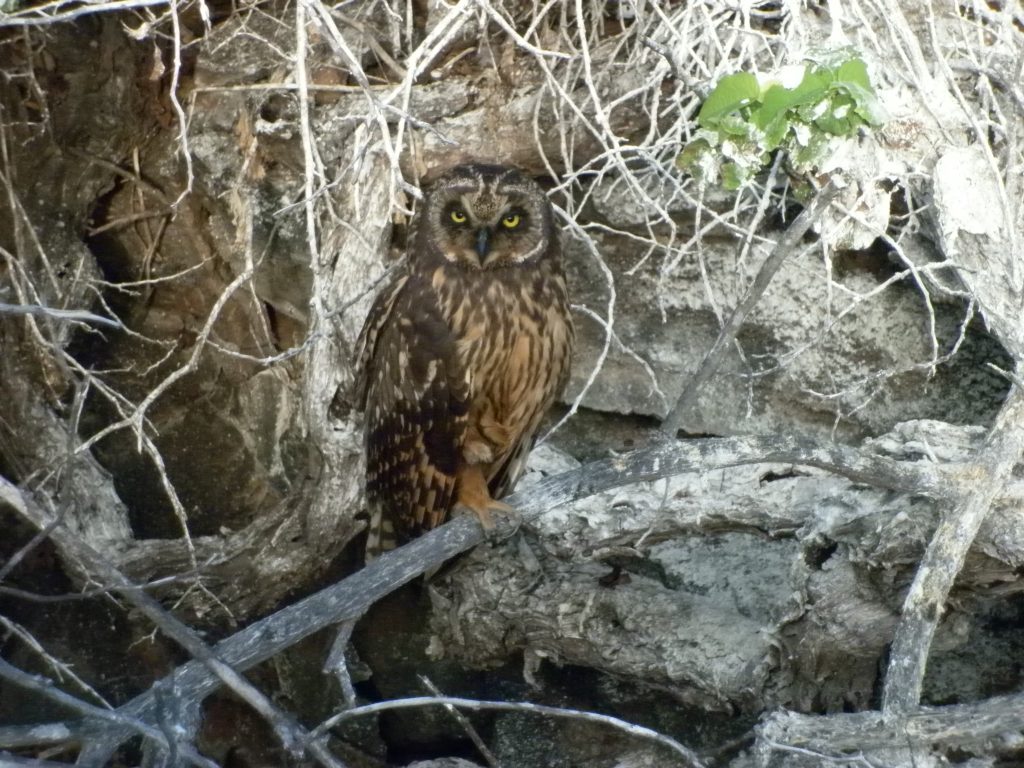The overcast sky on the morning of Sept. 13 made it very cool and comfortable. We landed on the beach at Genovese Island by boat, and we were greeted by the familiar sight of sleeping sea lions.
We saw many red-footed boobies nesting in trees. One thing that never gets old is how astoundingly close you can get to these animals without bothering them. I put my camera right in front of a red-footed booby’s face and it responded with a blank stare.
We strolled for few hours in the morning seeing birds that we had already seen before. Nonetheless, it was a very scenic and pleasant walk.
In the afternoon, we went to another part of the island landing at a place called “Prince Philip’s Steps.” Climbing the stairs, we were met by a Nazca just hanging out. This part of the island was full of Nazca boobies nesting on the ground. A few were sitting on eggs while others were tending to their chicks.
During our briefing the night before, our guide Hans, told us that there was a chance that we might find a short-eared owl. But we’d really have to keep our eyes open because they were very well camouflaged. We were in the area for a while, looking for them. After about half an hour of searching, one member of our group spotted one. We felt very lucky because we could barely see it against the rocks behind it and it was pretty far away.
We walked on and Hans found another one that was much closer. We all gathered close to it and a paparazzi-style photo session promptly ensued.
Another really cool bird that we saw was the red-billed tropicbird. I couldn’t get a good picture of one because my camera couldn’t zoom in close enough. But here is a picture of it from the Rochester Institute of Technology:
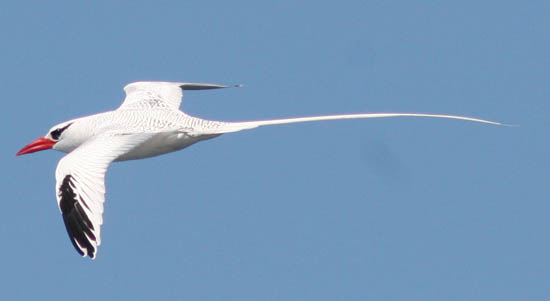
A red-billed tropicbird. (http://people.rit.edu/rhrsbi/GalapagosPages/TropicBird.html accessed on Oct. 6, 2011)
Later, that night we crossed over the equator line to get to Santiago Island. Right before going to bed, Anna and I conducted our own little Coriolis effect experiment in our bathroom sink. We stopped up the drain, filled the sink with water and then observed the direction that the water drained in the northern hemisphere: counterclockwise.

